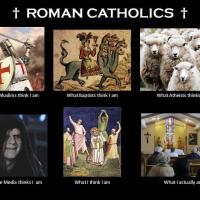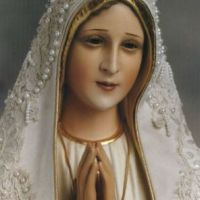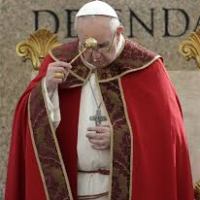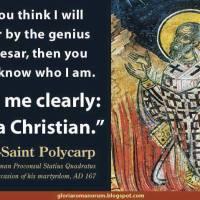All posts for the month July, 2012
Confession 3. When last have you taken the time to apologise?
Within the Sacrament of Reconciliation there are three rites of Reconciliation which all play a role in completing the process of Reconciliation. These rites are ordered the first rite, the second rite and the third rite of Reconciliation. The first rite of Reconciliation is Individual confession, the second rite is a communal celebration and the third rite is general absolution in a communal Rite of Reconciliation.
The First Rite of Reconciliation (Individual Confession):
In this century, we as Christians complete this first Rite of Reconciliation most commonly than any other rite. Many churches today have a Reconciliation Room, where a penitent and a priest are seated and the penitent begins confessing their sins. This is completed in a special process with four key elements. These elements are confession, act of contrition, absolution and penance. In this process the penitent begins confessing their sins, and acknowledging what they have done wrong and wanting to turn back to God. After they say a prayer of contrition which shows acknowledge of their sins the priest then absolves them from their sins. After this is completed the priest then gives the penitent penance which is a prayer or prayers that they have to say in order for their sins to be forgiven. This is the first rite of Reconciliation called individual confession. This is the rite which is now commonly used in the church and is most preferred.
The Second Rite of Reconciliation(Communal Celebration):
Many churches provide opportunities for people to use the Sacrament of Reconciliation as a part of a communal celebration, rather than individually (the first Rite of Reconciliation). If there are communal celebrations, then they are usually held in Lent or Advent as these are the penitential season of the Church year. The celebration begins with a hymn, and a greeting by priest, immediately followed by a prayer expressing forgiveness . There are scripture readings from the Old testament as well as Gospels. After a brief homily and personal reflection time, each person then begins to confess to a priest individually and receives absolution. In this process there is more than one priest going around the church and they all use the same procedure as the First Rite (confession, act of contrition, absolution and penance). After the prayers of penance have been said the priest then says a blessing over the congregation and ends with “Go in peace”. This rite is still practiced although not as commonly as the first Rite of Reconciliation.
The Third Rite of Reconciliation (General Absolution in a Communal Rite of Reconciliation):
This Rite of Reconciliation is only used in some circumstances where there is no opportunity for individual confession such as in war or national emergency’s. This Rite, in some ways is similar to the second Rite, sometimes with hymns, scripture readings and a homily. However in this Rite individuals do not get to go up and speak to the priest individually. Instead of this procedure, the priest gives a general absolution of sins after the community have reflected on their sins, privately and have said a prayer acknowledging their repentance. The people who attend this Rite are expected to have a genuine sorrow for their sins and must want to live a better life in the future. If any penitent needs to confess a very serious sin, then they will be asked to confess it individually.
These are all the Three Rites of Reconciliation (individual confession, communal celebration and general absolution in a communal Rite of Reconciliation) which all portray different ways in which people confess sins and are able to confess sins, not always particularly individually.
Read more here.
Posted by 1catholicsalmon on July 31, 2012
https://1catholicsalmon.wordpress.com/2012/07/31/confession-3-when-last-have-you-taken-the-time-to-apologise/
Confession 2: The History of Confession
History of the Sacrament of Reconciliation in the Church
Jesus educated and lived by the message of reconciliation in his parables and in his healings, as we see this through bible stories. We as Christians believe that the life of a Christian is one of reconciliation and with our self, others and God. The Catholic church, from the earliest times, has had a deep understanding and believed profoundly in the mercy and forgiveness of God. The Sacrament of Reconciliation and Penance, through the power of the Holy Spirit, has been used as an opportunity to reconcile with their selves, God and the community. Below is information about how Reconciliation was celebrated in the Early Church and how it has developed.
The Sacrament in the First and Second Centuries:
In these early centuries, it was believed that baptism was to the sign of the converted person’s new life in Christ which involved the forgiveness of sin. It was understood that baptised people gained forgiveness through taking the Eucharist and participating in prayer, fasting and almsgiving. When confessing sins, they were said directly to God. For mortal or serious sin, the Church began a process of community penance.
They believed that forgiveness could only be received once in a life time, but a person had fallen into a very deadly sin again, they would be unable to receive the Sacraments of Reconciliation, Eucharist and Anointing. However, the Christian community would pray for the person at death.
The Sacrament in the Third to Fifth Centuries:
In these centuries a formal ritual for forgiveness of sin was gradually developed. This was a public ritual , which was celebrated a s a community, and presided by a bishop, in which the person in need of forgiveness was received into the order of penitents. The sinner would have to start fasting, prayer and works of charity in the community as a procedure of penance and conversion. The bishop, would then bring them back into the community, on behalf of the community in a liturgy which was usually celebrated just prior to Easter.
The ceremony of forgiveness was kept as side for major sins in the community, and forgiveness could be taken out of action for a period of time between three to fifteen years. Sometimes the sins were known to the whole community, and overtime the penitent would sometimes confide their sins to a bishop or priest.
The Sacrament in the Sixth to Ninth Centuries:
In England and Ireland, the practice of looking for private spiritual help from monks became popular in these countries. As this spiritual help became more common, it led to a private ritual of Reconciliation which was then frequently used in the Church . In the late sixth century, when monks from England and Ireland came to Europe, the practice of private reconciliation became typical. After this happening, public penance then shifted to the practice of private confession. This took over that once-in-a-life-time public ritual that used to be commonly practiced. Only in some Eastern Churches have public forms of confession followed by private confession.
The Sacrament in the Twelfth and Thirteenth Centuries:
In the twelfth and thirteenth centuries, procedure for reconciliation in the Church was made. This consisted of:
- Confession: this is when the person tells his/her sin to the priest, which represents Jesus in the Church
- Contrition: this is when the person is genuinely sorry for his/her sin and expresses this sorrow.
- Absolution: this is when the priest then offers forgiveness on behalf of God and the Church.
- Satisfaction: under the direction of the priest the person does something to apologize for the damage they have caused by his/her sin. This also can be referred to as a “penance”.

Sixteenth Century
At the Council of Trent, it was said Confession or Penance was now a sacrament of the church. This declaration confirmed the practice that was already in place. The church then suggested that Catholics now had to use this sacrament at least once a year.
Twentieth Century
The Second Vatican council suggested that they call for the revision of the Sacrament of Penance. So in 1973 the revised Sacrament was publicized, which also promoted the three rites in which may be celebrated today. After this, there was a new emphasis on God’s love and mercy and the opportunity of the Sacrament offered for reconciliation. After this the importance of the community dimension was strained. Catholics were then encouraged to also have community celebrations of reconciliation as well as an individual celebration and acknowledgement of sin.
Posted by 1catholicsalmon on July 31, 2012
https://1catholicsalmon.wordpress.com/2012/07/31/confession-2-the-history-of-confession/
CONFESSION 1: Forgotten,ignored and definitely underrated.
The symbolism in this picture prompts a prayer from me:
I need Your mercy and forgiveness Lord: I reach out for Your love, to be closer to You, to be reconciled with You; I admit that I have strayed from Your path and that I have offended You in my thoughts, actions or words; I reach for greater intimacy with You my Lord God and Saviour; I want Your Grace Lord, to renew me and open my eyes to You and in order to see how You want to use me for Your glory. Amen.
I still call this Sacrament Confession however, this term is interchangeable with that of RECONCILIATION. Ever since my first Reconciliation, this Sacrament remains an integral and indispensable part of my relationship with Jesus. It has always been special because of the Grace I receive through this Sacrament.
At a prayer group recently the topic of Reconciliation came up and I was surprised to find out that it is looked upon as a daunting experience. Yes, I am nervous at the thought of confessing my sins to God but I know that God instituted this Sacrament through Jesus, using His priests as conduits here on earth for the my benefit of my soul and my openness to the Grace which I receive at Holy Communion. I have experienced two Grace-filled times during Holy Communion after having received absolution in the Sacrament of Reconciliation. It was just beautiful, so I continue to seek the tangible peace of the Lord again and again. Reconciliation plays a huge part in this search for me. All Catholics are free to receive this gift of Grace. The good Lord hands it out for free through His Sacraments of the Church.
A direct quote : from the Catechism of the Catholic Church.
” I. What is This Sacrament Called?
1423 It is called the sacrament of conversion because it makes sacramentally present Jesus’ call to conversion, the first step in returning to the Father5 from whom one has strayed by sin.
It is called the sacrament of Penance, since it consecrates the Christian sinner’s personal and ecclesial steps of conversion, penance, and satisfaction.
1424 It is called the sacrament of confession, since the disclosure or confession of sins to a priest is an essential element of this sacrament. In a profound sense it is also a “confession” – acknowledgment and praise – of the holiness of God and of his mercy toward sinful man.
It is called the sacrament of forgiveness, since by the priest’s sacramental absolution God grants the penitent “pardon and peace.”6
It is called the sacrament of Reconciliation, because it imparts to the sinner the live of God who reconciles: “Be reconciled to God.”7 He who lives by God’s merciful love is ready to respond to the Lord’s call: “Go; first be reconciled to your brother.”8 ”
Sacraments are God’s gift to the Church. They both symbolize God acting in the lives of people and they bring about what they symbolize. One way to think about how symbolic action has a real impact is to think of an embrace between husband and wife or between close friends. To those looking on, the embrace is a symbol of the closeness of the relationship between the people. For the people themselves the embrace actually brings them closer together as through it they feel more strongly bonded to each other. Sacraments are a little like that.
When a person is baptized, those observing the symbolic action of either immersion in water or of water being poured – are prompted to think of wide range of associations that water brings to mind. Examples include water that cleanses, rain that refreshes parched land; the sea, lakes and rivers teaming with life; floods that destroy; and our fear of drowning. For the person who is baptized the experience of symbolic drowning and cleansing has an impact on their interior life of feelings and values. Through God’s grace bestowed in the Sacrament of Baptism a Christian’s life takes on a new meaning and their relationship with God and the Christian community becomes deeper and richer.
All of the sacraments involve people making use of material things acting in symbolic ways. God’s Grace works in the body, mind and spirit of a person as they participate in sacramental action. Sacraments have a real effect on the life of those who accept them as gifts from God. In and through sacraments people, are invited to reflect upon the meaning and significance of their relationship with God, with others and all of creation.
Posted by 1catholicsalmon on July 31, 2012
https://1catholicsalmon.wordpress.com/2012/07/31/confession-1-forgottenignored-and-definitely-underrated/
Which way now?.
Posted by 1catholicsalmon on July 29, 2012
https://1catholicsalmon.wordpress.com/2012/07/29/which-way-now/
Mother Teresa exhibition in the Olympic City:-London 2012
What an opportune time to host an exhibition of Mother Teresa! The exhibition will be open Tuesday to Saturday from 11am-7pm daily until 15 September in the crypt of St Patrick’s church, Soho, 21a Soho Square, London W1D 4NR See: http://Stpatricksoho.org/
A life-size replica of the bedroom of Blessed Teresa of Calcutta has been created in the church of St Patrick’s, Soho, central London.
This shows the pictures by her bed, and the boxes in which – til the end of her life – she distributed post for each of the sisters in the house where Mother Teresa lived in Calcutta.
It is part of a free exhibition about the life and message of Mother Teresa. Mother Teresa, Life, Spirituality Message opened this week, after a special Mass at St Patrick’s on Monday night. This was concelebrated by the Papal Nuncio to England, Archbishop Antonio Mennini.
Visit and you will also see Blessed Teresa’s Sari, and headband and cardigan, her prayer book, and a copy of the chapel typical to houses of the Missionaries of Charity, the order Mother Teresa founded in 1950.
Read more about it here.
Posted by 1catholicsalmon on July 26, 2012
https://1catholicsalmon.wordpress.com/2012/07/26/mother-teresa-exhibition-in-the-olympic-city-london-2012/
Largest denominations in the world

Debate between Catholics and Oriental Christians in the 13th century, Acre 1290. (Photo credit: Wikipedia)
Catholicism – 1.2 billion
- Roman Catholic Church – 1,147 million[1]
- Roman Catholic Church (Latin Rite) – 1,125.5 million
- Eastern Catholic Churches (Eastern Rite) – 21.5 million
- Alexandrian
- Ethiopian Catholic Church – 0.21 million
- Coptic Catholic Church – 0.17 million
- Antiochian (Antiochene or West Syrian)
- Maronite Catholic Church – 3.1 million
- Syro-Malankara Catholic Church – 0.5 million
- Syriac Catholic Church – 0.17 million
- Armenian
- Armenian Catholic Church – 0.54 million
- Chaldean (Eastern Syrian)
- Syro-Malabar Catholic Church – 4.0 million
- Chaldean Catholic Church – 0.65 million
- Byzantine (Constantinopolitan)
- Ukrainian Greek Catholic Church – 4.3 million
- Melkite Greek Catholic Church – 1.6 million
- Romanian Church United with Rome, Greek-Catholic – 0.8 million
- Ruthenian Catholic Church – 0.65 million
- Slovak Greek Catholic Church – 0.37 million
- Hungarian Greek Catholic Church – 0.27 million
- Italo-Greek Catholic Church – 0.07 million
- Croatian Greek Catholic Church – 0.06 million
- Belarusian Greek Catholic Church – 0.01 million
- Bulgarian Greek Catholic Church – 0.01 million
- Georgian Byzantine Catholic Church – 0.01 million[2]
- Macedonian Greek Catholic Church – 0.01 million
- Albanian Greek-Catholic Church – 0.01 million
- Greek Byzantine Catholic Church – 0.01 million
- Russian Catholic Church – 0.01 million
- Alexandrian
- Breakaway Catholic Churches – 28 million
- Apostolic Catholic Church – 5 million
- Chinese Patriotic Catholic Association – 4 million[3]
- Philippine Independent Church – 3 million
- Brazilian Catholic Apostolic Church – 1 million
- Old Catholic Church – 0.6 million
- Mariavite Church – 0.03 million
Protestantism – 670 million
- Historical Protestantism – 350 million
- Baptist churches – 105 million[4]
- Southern Baptist Convention – 16.3 million[5]
- National Baptist Convention, USA, Inc. – 7.5 million[6]
- National Baptist Convention of America, Inc. – 5 million[7]
- Nigerian Baptist Convention – 3 million[8]
- Progressive National Baptist Convention – 2.5 million[9]
- American Baptist Churches USA – 1.4 million
- Brazilian Baptist Convention – 1.4 million
- Baptist Bible Fellowship International – 1.2 million[10]
- Myanmar Baptist Convention – 1.1 million[11]
- Baptist Community of the Congo River – 1 million[11]
- National Baptist Convention, Brazil – 1 million
- National Primitive Baptist Convention of the U.S.A. – 1 million[10]
- National Missionary Baptist Convention of America – 1 million
- Samavesam of Telugu Baptist Churches – 0.8 million[12]
- Baptist Convention of Kenya – 0.7 million[11]
- Union of Evangelical Christians-Baptists of Russia – 0.6 million
- Methodism – 75 million
- United Methodist Church – 12 million
- African Methodist Episcopal Church – 3 million
- Methodist Church Nigeria – 2 million[13]
- African Methodist Episcopal Zion Church – 1.5 million
- Church of the Nazarene – 1.8 million
- Methodist Church of Southern Africa – 1.7 million[14]
- Korean Methodist Church – 1.5 million[15]
- United Methodist Church of Ivory Coast[16]
- Christian Methodist Episcopal Church – 0.9 million
- Methodist Church Ghana – 0.8 million[17]
- Free Methodist Church – 0.7 million
- Methodist Church in India – 0.6 million[18]
- Lutheranism – 87 million[19]
- Evangelical Church in Germany – 26.9 million[20]
- Church of Sweden – 6.9 million
- Evangelical Lutheran Church in America – 4.8 million
- Ethiopian Evangelical Church Mekane Yesus – 4.7 million
- Evangelical Lutheran Church in Tanzania – 4.6 million[21]
- Danish National Church – 4.5 million
- Evangelical Lutheran Church of Finland – 4.3 million[22]
- Batak Christian Protestant Church – 4 million[23]
- Church of Norway – 3.9 million
- Malagasy Lutheran Church – 3 million
- Lutheran Church-Missouri Synod – 2 million
- Lutheran Church of Christ in Nigeria – 1.7 million[24]
- United Evangelical Lutheran Church in India – 1.5 million[25]
- Evangelical Lutheran Church in Papua New Guinea – 0.9 million[26]
- Andhra Evangelical Lutheran Church – 0.8 million[27]
- Evangelical Church of the Lutheran Confession in Brazil – 0.7 million[28]
- Evangelical Lutheran Church in Namibia – 0.6 million[29]
- Evangelical Lutheran Church in Southern Africa – 0.6 million[30]
- Reformed churches – 75 million
- Presbyterianism – 40 million
- Presbyterian Church of East Africa – 4 million[31]
- Presbyterian Church of Africa – 3.4 million[32]
- Presbyterian Church (U.S.A.) – 3.0 million
- United Church of Canada – 2.5 million
- Church of Christ in Congo-Presbyterian Community of Congo – 2.5 million[33]
- Presbyterian Church of Korea – 2.4 million[34]
- Presbyterian Church of Cameroon – 1.8 million[35]
- Church of Scotland – 1.1 million[36]
- Presbyterian Church of the Sudan – 1 million[37]
- Presbyterian Church in Cameroon – 0.7 million[38]
- Presbyterian Church of Ghana – 0.6 million[39]
- Presbyterian Church of Nigeria – 0.5 million[40]
- Uniting Presbyterian Church in Southern Africa – 0.5 million[41]
- Continental Reformed churches – 30 million
- Church of Jesus Christ in Madagascar – 3.5 million[42]
- United Church of Zambia – 3.0 million[43]
- Protestant Church in the Netherlands – 2.5 million[44]
- Swiss Reformed Church – 2.4 million
- Evangelical Church of Cameroon – 2 million[45]
- Protestant Evangelical Church in Timor – 2 million[46]
- Christian Evangelical Church in Minahasa – 0.7 million[47]
- United Church in Papua New Guinea – 0.6 million[48]
- United Church of Christ in the Philippines – 0.6 million[49]
- Protestant Church in Western Indonesia – 0.6 million[50]
- Evangelical Christian Church in Tanah Papua – 0.6 million[51]
- Protestant Church in the Moluccas – 0.6 million[52]
- Reformed Church in Hungary – 0.6 million[53]
- Reformed Church in Romania – 0.6 million[54]
- Uniting Reformed Church in Southern Africa – 0.5 million[55]
- Congregationalism – 5 million
- United Church of Christ – 1.2 million
- Evangelical Congregational Church in Angola – 0.9 million[56]
- United Congregational Church of Southern Africa – 0.5 million[57]
- Presbyterianism – 40 million
- Anabaptism and Free churches – 5 million
- Brethren – 1.5 million[58]
- Mennonites – 1.5 million
- Plymouth Brethren – 1 million[59]
- Moravians – 0.7 million[60]
- Amish – 0.2 million
- Hutterites – 0.2 million
- Quakers – 0.4 million
- Waldensians – 0.05 million
- Baptist churches – 105 million[4]
- Modern Christian movements – 588 million[61]
- Pentecostalism – 130 million
- Assemblies of God – 60 million
- New Apostolic Church – 11 million
- International Circle of Faith – 11 million[62]
- The Pentecostal Mission – 10 million
- Church of God (Cleveland) – 9 million
- International Church of the Foursquare Gospel – 8 million
- Church of God in Christ – 5.5 million
- Apostolic Church – 6 million
- Christian Congregation of Brazil – 2.5 million
- Universal Church of the Kingdom of God – 2 million
- Church of God of Prophecy – 1 million
- God is Love Pentecostal Church – 0.8 million
- Indian Pentecostal Church of God – NA
- Non-denominational evangelicalism – 80 million
- Calvary Chapel – 25 million
- Born Again Movement – 20 million
- Association of Vineyard Churches – 15 million
- New Life Fellowship – 10 million[citation needed]
- True Jesus Church – 2.5 million
- Charismatic Episcopal Church – NA
- African initiated churches – 40 million
- Zion Christian Church – 15 million
- Eternal Sacred Order of Cherubim and Seraphim – 10 million
- Kimbanguist Church – 5.5 million
- Church of the Lord (Aladura) – 3.6 million[63]
- Council of African Instituted Churches – 3 million[64]
- Church of Christ Light of the Holy Spirit – 1.4 million[65]
- African Church of the Holy Spirit – 0.7 million[66]
- African Israel Niniveh Church[67]
- Seventh-day Adventist Church – 17 million
- Restoration Movement – 7 million
- Churches of Christ – 5 million
- Christian Churches and Churches of Christ – 1.1 million[10]
- Christian Church (Disciples of Christ) – 0.7 million
- Pentecostalism – 130 million
Eastern Orthodoxy – 210 million
- Autocephalous churches
- Russian Orthodox Church – 125 million
- Romanian Orthodox Church – 18 million
- Serbian Orthodox Church – 15 million
- Church of Greece – 11 million
- Bulgarian Orthodox Church – 10 million
- Georgian Orthodox Church – 5 million
- Greek Orthodox Church of Constantinople – 3.5 million
- Greek Orthodox Church of Antioch – 2.5 million
- Greek Orthodox Church of Alexandria – 1.5 million
- Orthodox Church in America – 1.2 million
- Polish Orthodox Church – 1 million
- Albanian Orthodox Church – 0.8 million
- Cypriot Orthodox Church – 0.7 million
- Greek Orthodox Church of Jerusalem – 0.14 million
- Czech and Slovak Orthodox Church – 0.07 million
- Autonomous churches
- Ukrainian Orthodox Church (Moscow Patriarchate) – 7.2 million[68]
- Moldovan Orthodox Church – 3.2 million
- Russian Orthodox Church Outside Russia – 1.25 million
- Metropolitan Church of Bessarabia – 0.62 million
- Orthodox Ohrid Archbishopric – 0.34 million
- Estonian Orthodox Church – 0.3 million
- Patriarchal Exarchate in Western Europe – 0.15 million
- Finnish Orthodox Church – 0.08 million
- Chinese Orthodox Church – 0.03 million
- Japanese Orthodox Church – 0.02 million
- Latvian Orthodox Church – 0.02 million
- Non-universally recognized churches
- Ukranian Orthodox Church (Kyiv Patriarchate) – 5.5 million[68]
- Belarusian Autocephalous Orthodox Church – 2.4 million
- Macedonian Orthodox Church – 2 million
- Orthodox Church of Greece (Holy Synod in Resistance) – 0.75 million
- Old Calendar Romanian Orthodox Church – 0.50 million
- Old Calendar Bulgarian Orthodox Church – 0.45 million
- Croatian Orthodox Church – 0.36 million
- Montenegrin Orthodox Church – 0.05 million
- Orthodox Church in Italy – 0.12 million
- Other separated Orthodox groups
- Old Believers – 1.8 million
- Greek Old Calendarists – 0.86 million
- Russian True Orthodox Church – 0.85 million
Oriental Orthodoxy – 75 million
- Autocephalous churches in communion
- Ethiopian Orthodox Tewahedo Church – 45 million
- Coptic Orthodox Church of Alexandria – 15.5 million
- Syriac Orthodox Church – 10 million
- Armenian Orthodox Church – 8 million
- Eritrean Orthodox Tewahedo Church – 2.5 million
- Indian (Malankara) Orthodox Church – 2 million[69]
- Armenian Orthodox Church of Cilicia – 1.5 million
- Autonomous churches in communion
- Jacobite Syrian Orthodox Church – 2.5 million
- Armenian Patriarchate of Constantinople – 0.42 million
- Armenian Patriarchate of Jerusalem – 0.34 million
- French Coptic Orthodox Church – 0.01 million
- British Orthodox Church – 0.01 million
- Churches not in communion
- Malabar Independent Syrian Church – 0.06 million
Anglicanism – 82 million
- Anglican Communion – 80 million[70]
- Church of Nigeria – 18 million
- Church of England – 13.4 million
- Church of Uganda – 8.8 million
- Church of South India – 3.8 million
- Anglican Church of Australia – 3.7 million
- Episcopal Church in the Philippines – 3.0 million
- Anglican Church in Aotearoa, New Zealand and Polynesia – 2.5 million
- Anglican Church of Tanzania – 2.5 million
- Anglican Church of Southern Africa – 2.4 million
- Episcopal Church of the United States – 2.2 million
- Anglican Church of Canada – 2.0 million
- Anglican Church of Kenya – 1.5 million
- Church of North India – 1.3 million
- Church of the Province of Rwanda – 1 million
- Church of Pakistan – 0.8 million
- Anglican Church of Burundi – 0.8 million[71]
- Church of the Province of Central Africa – 0.6 million
- Church of Christ in Congo-Anglican Community of Congo – 0.5 million[72]
- Scottish Episcopal Church – 0.4 million
- Church of Ireland – 0.4 million
- Continuing Anglican movement – 1.5 million
- Traditional Anglican Communion – 0.5 million
- Anglican Church in North America – 0.1 million
Nontrinitarianism – 27 million
- Latter Day Saint movement (Mormonism) – 14 million
- The Church of Jesus Christ of Latter-day Saints – 13.5[73]
- Community of Christ – 0.25 million[74]
- Jehovah’s Witnesses – 7.1 million
- Iglesia ni Cristo – 6 million[75]
- Oneness Pentecostalism – 6 million
- United Pentecostal Church International – 4 million
- Pentecostal Assemblies of the World – 1.5 million
- Church of Christ, Scientist – 0.4 million
- Friends of Man – 0.07 million
- Christadelphians – 0.05 million
Nestorianism – 1 million
- Assyrian Church of the East – 0.5 million
- Ancient Church of the East – 0.3 million
From Bible Press.com
Posted by 1catholicsalmon on July 26, 2012
https://1catholicsalmon.wordpress.com/2012/07/26/largest-denominations-in-the-world/
The Lord’s Prayer: I cannot say…

Lord Howe Island (Photo credit: Robert Whyte http://www.arachne.org.au).
I cannot say…..
“Our” – if I live only for myself.
“Father” – if I do not endeavor each day to act like his child.
“Who art in heaven” – if I am laying up no treasure there.
“Hallowed be thy name” – if I am not striving for holiness.
“Thy Kingdom come” – if I am not doing all in my power to hasten that wonderful event.
“Thy will be done” – if I am disobedient to his Word.
“On earth as it is in heaven” – if I do not serve him here and now.
“Give us this day our daily bread” – if I am dishonest or am seeking things by subterfuge.
“Forgive us our debts” – if I harbor a grudge against anyone.
“Lead us not into temptation” – if I deliberately place myself in its path.
“Deliver us from evil” – if I do not put on the whole armor of God.
“Thine is the kingdom” – if I do not give the King the loyalty due him from a faithful subject.
“The power” – if I fear what men may do.
“The glory” – if I’m seeking honor only for myself, and
“Forever” – if the horizon of my life is completely bounded by time.
I found this interpretation here: The Lord’s Prayer
Posted by 1catholicsalmon on July 26, 2012
https://1catholicsalmon.wordpress.com/2012/07/26/the-lords-prayer/
Our Lady of the Most Blessed Sacrament
Posted by 1catholicsalmon on July 24, 2012
https://1catholicsalmon.wordpress.com/2012/07/24/our-lady-of-the-most-blessed-sacrament/


























































